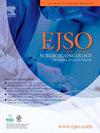垂体腺瘤术后深静脉血栓形成风险比较及评估模型:一项回顾性队列研究
IF 2.9
2区 医学
Q2 ONCOLOGY
引用次数: 0
摘要
深静脉血栓形成(DVT)是静脉血栓栓塞(VTE)的主要组成部分,是一种常见的术后并发症。垂体腺瘤术后其发生受多种因素影响。方法回顾性分析2018-2023年北京天坛医院收治的1440例垂体腺瘤病例。记录术后DVT的发生率,并采用logistic回归分析确定相关危险因素。比较不同垂体腺瘤亚型间的差异。此外,还开发了回归和机器学习模型来预测DVT。结果397例患者术后行下肢超声检查,104例(7.2%)发生深静脉血栓形成。显著危险因素包括高龄、较高的身体质量指数(BMI)、静脉插管、住院时间延长、术前激活部分凝血活酶时间(APTT)缩短、凝血酶时间(TT)延长、血小板计数升高、术后d -二聚体水平升高。库欣病患者DVT发生率明显升高,可能与术前和术后APTT和PT/INR值降低有关。相反,催乳素腺瘤患者DVT发生率较低,可能是由于年龄较小,术后PT值较高。支持向量机(SVM)模型具有较强的预测性能(AUC: 0.82,准确率:86.08%,特异性:96.72%)。结论垂体腺瘤不同亚型间dvt发生率不同。机器学习增强垂体腺瘤患者术后DVT的预测模型。本文章由计算机程序翻译,如有差异,请以英文原文为准。
Risk comparison and assessment model of deep vein thrombosis in patients with pituitary adenomas after Surgery:A retrospective cohort study
Background
Deep vein thrombosis (DVT), a major component of venous thromboembolism (VTE), is a common postoperative complication. Its occurrence after pituitary adenoma surgery is influenced by multiple factors.
Methods
This retrospective study analyzed 1440 pituitary adenoma cases treated at Beijing Tiantan Hospital (2018–2023). The incidence of postoperative DVT was recorded, and logistic regression was used to identify associated risk factors. Differences across pituitary adenoma subtypes were compared. Additionally, Regression and machine learning models were developed to predict DVT.
Results
Among 397 patients who underwent postoperative lower limb ultrasound, 104 (7.2 %) developed DVT. Significant risk factors included advanced age, higher body mass index (BMI), intravenous cannulation, prolonged hospital stay, shorter preoperative activated partial thromboplastin time (APTT), longer thrombin time (TT), elevated platelet count, and higher postoperative D-dimer levels. Patients with Cushing's disease exhibited a significantly higher DVT incidence, potentially related to decreased pre- and postoperative APTT and PT/INR values. Conversely, patients with prolactin-secreting adenomas had a lower DVT incidence, possibly due to younger age and higher postoperative PT values. A support vector machine (SVM) model showed strong predictive performance (AUC: 0.82; accuracy: 86.08 %; specificity: 96.72 %).
Conclusion
DVT incidence varies by pituitary adenoma subtype. Machine learning enhances predictive models for postoperative DVT in pituitary adenoma patients.
求助全文
通过发布文献求助,成功后即可免费获取论文全文。
去求助
来源期刊

Ejso
医学-外科
CiteScore
6.40
自引率
2.60%
发文量
1148
审稿时长
41 days
期刊介绍:
JSO - European Journal of Surgical Oncology ("the Journal of Cancer Surgery") is the Official Journal of the European Society of Surgical Oncology and BASO ~ the Association for Cancer Surgery.
The EJSO aims to advance surgical oncology research and practice through the publication of original research articles, review articles, editorials, debates and correspondence.
 求助内容:
求助内容: 应助结果提醒方式:
应助结果提醒方式:


